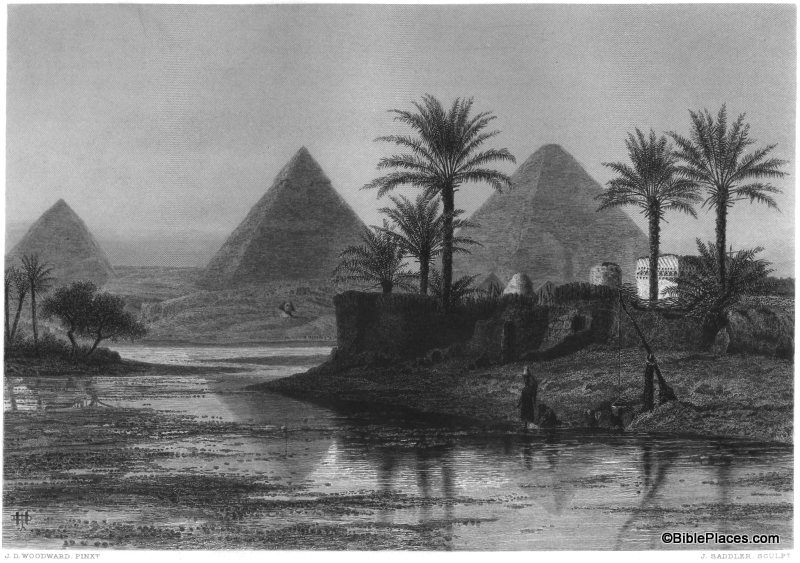(Post by Seth M. Rodriquez)
People often wonder how the Great Pyramids of Giza were built and how much work it took to construct them. But have you ever asked yourself, “How much work would it take to tear down the pyramids?” In the late twelfth century, some people tried to do just that. Volume 4 of Picturesque Palestine, Sinai and Egypt provides us with the story.
The image below is entitled “Pyramids of Gizeh” and is one of the few steel engravings in this volume. (The rest of the images are wood engravings.) In the section below, the author summarizes the work of a 13th century physician known as ’Abd-el-Latif of Baghdad. ’Abd-el-Latif visited Egypt and wrote of his experiences there. In 1196, the governing authorities decided to tear down one of the pyramids to provide raw material for a new construction project.
’Abd-el-Latif tells us how he saw the workmen of El-Melik El-’Azîz, son of Saladin, employed in 1196 in pulling down the Third Pyramid—that at the left in our steel engraving of the Three Pyramids of Gîzeh, from a sketch made during the inundation. A large body of engineers and miners pitched a camp close to the Red Pyramid (as the Third was called from its beautiful granite casing), and with their united and continuous efforts achieved the removal of one or two stones a day. The blocks fell down with a tremendous shock, and buried themselves in the sand, whence they were extricated with immense toil and then were laboriously broken up. At the end of eight months the treasury was exhausted and the work of destruction abandoned. To look at the quantity of stone taken away you would think, says the observer, that the whole monument had been razed to the ground; but when you lift your eyes to the Pyramid itself, it is hard to see that it has suffered the least diminution! One day ’Abd-el-Latîf asked one of the workmen, who had assisted in laboriously removing one stone from its place, whether he would put it up again for a thousand gold pieces? The man answered that they could not do it if the reward were many times multiplied. And so in spite of the efforts of man and the wearing of time, the Red Pyramid of Menkara still stands besides its two sisters at Gîzeh, and verifies the saying that “Time mocks all things, but the Pyramids laugh at Time.”
Quote taken from Picturesque Palestine, Sinai and Egypt, vol. 4, pp. 170-173. This and other images of nineteenth-century Egypt are available in Picturesque Palestine, Volume IV: Sinai and Egypt and can be purchased here. Additional images of the Giza Pyramids can be seen here and here.
